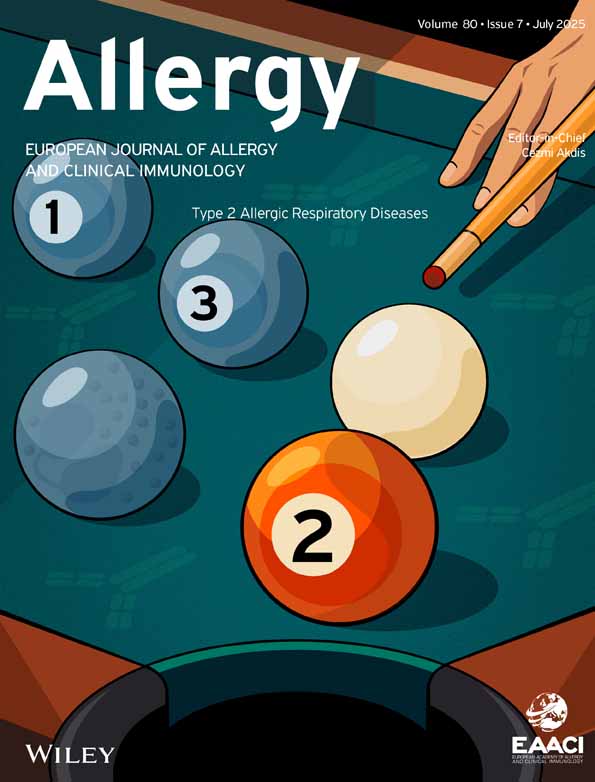Expression of eotaxin in induced sputum of atopic and nonatopic asthmatics
Abstract
Background: The chemokine eotaxin has been implicated in airway eosinophilia in atopic asthma. We have compared airway eosinophils and eotaxin expression in induced sputum from well-matched atopic and nonatopic asthmatics.
Methods: Eosinophil numbers, eosinophil cationic protein (ECP), and the expression of eotaxin were examined in induced sputum from atopic asthmatics (AA=11), nonatopic asthmatics (NAA=11), and atopic (AC=12) and normal (NC=10) controls. Slides were prepared for differential cell counts by Romanowsky stain, and ECP levels were measured by RIA. Eotaxin expression was detected by in situ hybridization, with 35S-labelled riboprobes and immunocytochemistry.
Results: The numbers of eosinophils and ECP concentration were increased in the sputum of AA and NAA compared with AC and NC (P<0.05). The numbers of eotaxin mRNA+ and immunoreactive cells were increased in NAA, but not AA, when compared with controls (P<0.05). Eotaxin immunoreactive cells in NAA were significantly higher than in AA (P<0.05).
Eotaxin was expressed predominantly by macrophages, eosinophils, and epithelial cells. In NAA, but not AA, the numbers of eotaxin mRNA+ cells were correlated with histamine PC20 (r=−0.81, P<0.01) and eosinophil numbers in sputum (r=0.7, P<0.05).
Conclusions: Eotaxin production by macrophages, eosinophils, and epithelial cells may play a more pronounced role in airway eosinophilia in nonatopic than in atopic asthma.




